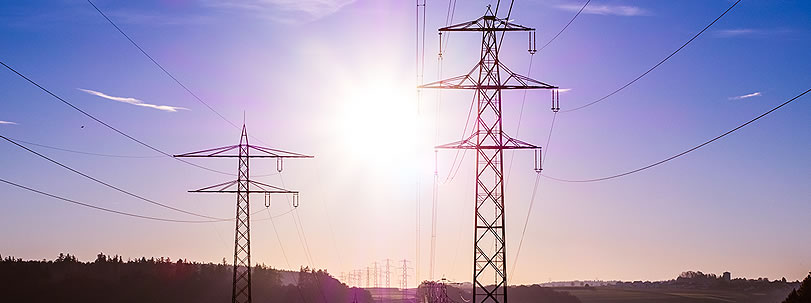Why power companies are struggling in Africa

Having concluded in Part 1 of this two part series, that the power sector challenges are like a tangled ball of wool, allow us to pick some threads out and take a closer look at some of the pieces of the puzzle.
One controversial point that has emerged is around the level of state support that Kenya Power is entitled to. In April 2021, there was press coverage on a statement by the Ministry of Energy to the effect that it would, when developing regulations, safeguard Kenya Power from losing customers through the proposed direct sales by Kengen. The reason cited was that such customers might prove useful in taking up demand of electricity that the utility has committed to purchase from IPPs. In sharp contrast, in his Labour Day speech on 1 May 2021, Ugandan President Museveni announced that for industrial parks, the power would bypass Umeme, the main electricity distribution company, so as to be transmitted directly from the generator to the industrial parks. It is interesting to see such divergent approaches to dealing with a struggling power utility – one being to support it by ringfencing some of its business and the other cutting it off to a greater degree and thus shielding consumers from its inefficiencies.
It is important to realise that when a government reduces support for a power utility, the impact is not felt by a juridical person but by flesh and blood persons. A good case in point is the proposed reduction by the Kenyan government in its budgetary allocation for subsidised connections by 87%, which shall impact the Last Mile Connectivity initiative. And while the government inevitably has to tighten its belt in many respects, this move may put connectivity costs out of reach for the vulnerable rural poor.
Another important constituent in the case of the Kenyan power utility is its staff. Despite the noble intention of implementing fiscal discipline through a headcount reduction, it has been compelled to drop its workers layoff plan due to a strike threat issued by the Kenya Electrical Trades and Allied Workers Union. Again, balancing between commercial interests and social responsibility is a tougher challenge for a power utility given its inescapable public interest. Other costs which are difficult to hedge against include foreign exchange fluctuation given the level of exposure in the utility company’s borrowings as well as the power purchase balances owed to IPPs. To further compound matters, recent press reports indicate that businesses which incur financial losses due to power blackouts will soon begin to receive compensation from the utility company if proposed regulations by the energy regulator are adopted, a move which does not bode well for the utility’s already unwieldy cost structure.
Given the struggle in making headway on the cost reduction front, an electricity distributor can choose to focus on the other aspect of the profit equation i.e. the growth of revenue. However,given the vitriolic resistance of the Kenyan public to proposed increases in the cost of electricity, raising prices has not been a viable option in the Kenyan scenario.
If prices must be held constant, one way to improve turnover is to recruit new customers while retaining existing ones.
In a bid to woo large industrial customers the Energy and Petroleum Regulatory Authority (EPRA) approved a low power tariff of KShs 5 per kilowatt-hour for factories established in the Special Economic Zone in Olkaria-Kedong in Naivasha, which is approximately half the usual peak hour rate for manufacturers. Further, in acknowledgement that large power consumers account for about 60% of Kenya Power’s revenue, it introduced a Time of Use tariff to motivate this category of customers towards higher use of electricity at off-peak hours thus promoting 24-hour production.
Incentives notwithstanding, for some large industrial/ commercial electricity consumers, the most financially savvy option has been to generate their own power – the Devki group has invested in a coal power plant while the Kenya Tea Development Agency has turned to run of river hydroelectric power. Institutions such as Strathmore University have not been left behind as can be seen from its solar power production which was aimed at reducing electricity bills in the Kshs 2 million per month range. It is only a matter of time before industries and institutions start selling power to each other by entering into corporate PPAs, now that there is a legal framework for a more liberalised energy sector. Alternative sources of electrical power therefore represent a threat to the power utility’s business, which may not be offset by inducements offered to the market.
The twin problem of runaway costs and erosion of the customer base has the follow-on consequence of unserviceable debt. At present, the power utility company has issued an EOI to re-finance a staggering bank debt of Kshs 53 billion, which represents half of its total outstanding borrowings.
Taking a look around our continent, it is not surprising to see that power utilities are often beset by similar troubles. Eskom Holdings which is South Africa’s state power utility is saddled with debt estimated at US$ 32 billion and it reportedly continues to struggle to meet payments even with the help of state bailouts. In April 2021, Eskom disposed of some of its non-core assets, including two buildings, to raise capital and reduce its mounting debt.
Nigeria is hardly the poster child for stable or sufficient supply of electricity but the path it has taken may have some learnings for us. The Power Holding Company of Nigeria (PHCN) was privatised and unbundled in 2013 resulting in a number of electricity distribution companies (DISCOs) and generating companies (GENCOs). Shares in the GENCOs and DISCOs were sold to private investors as clean companies without any prior liabilities and the sale proceeds were applied towards severance packages for unionised workers. In addition, the Transmission Company of Nigeria (TCN) was to remain publicly owned but management would be outsourced to a private entity.
The Nigeria Electricity Liability Management Company (NELMCO) was mandated to take over management and settlement of PPA obligations and other legacy debts of PHCN. NELMCO assumed and administered the stranded debts and non-core assets of PHCN, as well as handling other sensitive matters such as the pension liabilities of PHCN employees. NELMCO has reportedly saved the Nigerian government billions through various mechanisms, including a triangular verification model for payment processing and use of a federal government promissory note program.
Even in countries with multiple distribution companies, the Ministry responsible for power/ energy has to closely monitor how such companies are fulfilling their obligations. In India for example, data released by the Ministry of Power indicates that as at March 2021, the distribution companies owed US$ 1.62 billion to renewable energy generators. This was an improvement on the position in earlier months, which may be attributable to the extensive loan programme announced by the Indian government in 2020. We observe that the Brazilian Government also designed a US$2.93 billion loan to assist distribution companies cope with the Covid-19 crisis.
While liberalising the power sector has advantages, it also calls for a robust institutional framework and state interventions to plug any gaps. Power utilities must also develop innovative ways of improving their earnings, including monetisation of their data which is something that Kenya Power is exploring, and which could be very lucrative if it can navigate the minefield of privacy and data protection laws. We note that Kenya Power will turn 100 years old in 2022 and we hope that its second century will be reflective of the lessons learned in the first one.
The article was featured in the Business Daily on 15 June 2021 and can be accessed here.



